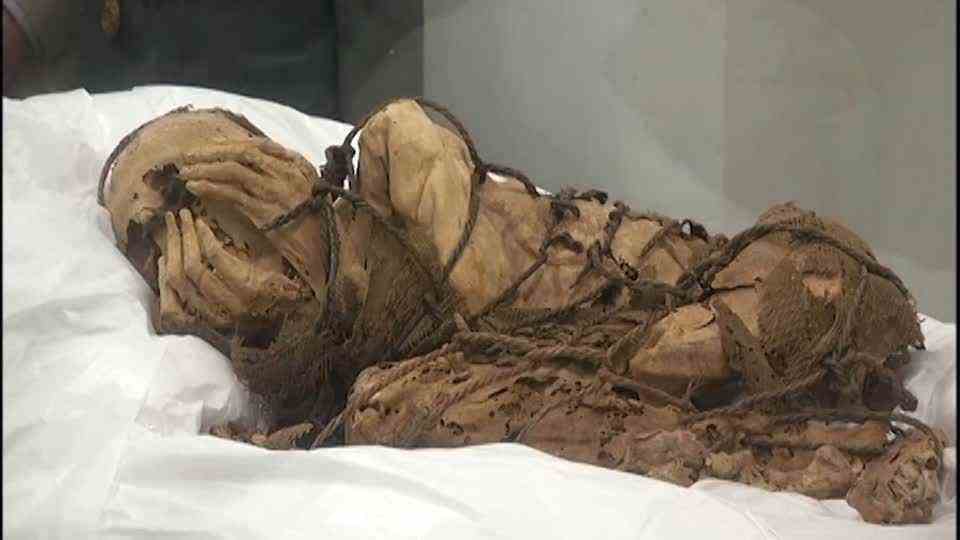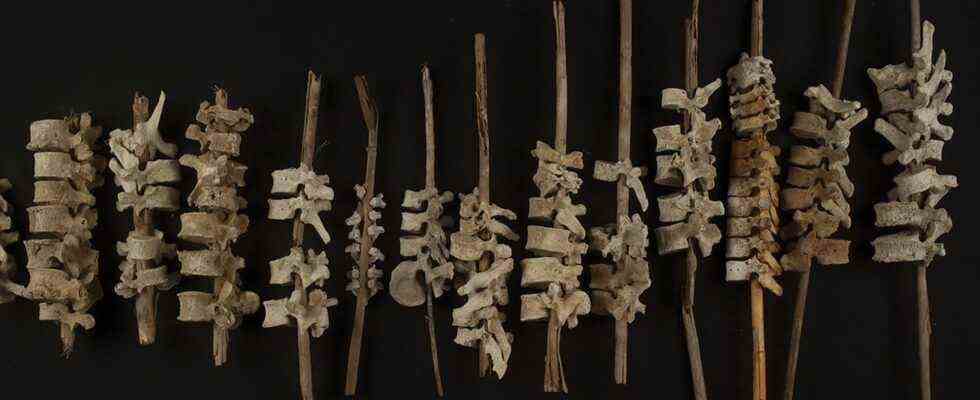Chincha Valley
The conquerors plundered their graves: almost 500-year-old skeletons on sticks discovered in Peru
The skeletons on sticks found in Peru were apparently intended to ensure the unity of the body even after death
© C. O’Shea / Antiquity
Archaeologists have found human remains on sticks in Peru. Apparently, the indigenous peoples tried to save the honor of their ancestors after grave looting by the Spanish conquerors.
Archaeologists have made an extremely unusual find in the Chincha Valley on the west coast of Peru. The scientists discovered 192 human skeletons impaled on wooden sticks in the region. The finds are probably around 500 years old and date from the final phase of the Inca Empire.
As the researchers explain in an article in the journal Antiquity, this was apparently a ritual introduced by the indigenous population in response to tomb looting by the Spanish conquerors. So the Andean people probably wanted to reassemble the mortal remains of their ancestors after they were destroyed by the Spanish. It is the first time that this ritual has been documented in the region.
Peru: For the chincha, death was not the end
“Looting of indigenous graves was very common in the Chincha Valley during colonial times,” said British researcher Jacob L. Bongers, who led the study. “The looting was primarily intended to steal gold and silver grave goods and went hand in hand with European efforts to eradicate indigenous religious practices and burial rituals.”
Radiocarbon investigations showed that the dead were originally buried between 1520 and 1550. The research team was able to show that the remains were impaled on the sticks 40 years after their burial. Around this time the Spaniards established their dominion in the Chincha area. The researchers understand the ritual as a sign of how important the unity of the body was to the Chincha even after death.
Spanish conquerors almost completely wiped out Incas
“Death wasn’t the end,” summarizes Longers. “What we see here is a long-term connection with the dead. Even European colonialism could not prevent local peoples from continuing to interact with their dead.” According to historical Spanish reports, about 30,000 people lived in the Chincha Valley, most of whom worked as fishermen and farmers. Society at that time is said to have been extremely wealthy. The kingdom of the Chincha existed from about 1000 to 1400 and was then conquered by the Incas.

In 1528, Spanish conquistadors led by Francisco Pizarro first reached the Inca region and conquered the country in the years that followed. The region was also badly hit by hunger and epidemics at this time. Due to these strokes of fate and the violence of the Spanish conquerors, the Incas were almost completely wiped out by the beginning of the 17th century.
Sources: Assembling the dead: human vertebrae-on-posts in the Chincha Valley, Peru / “Guardians” / “National Geographic”


